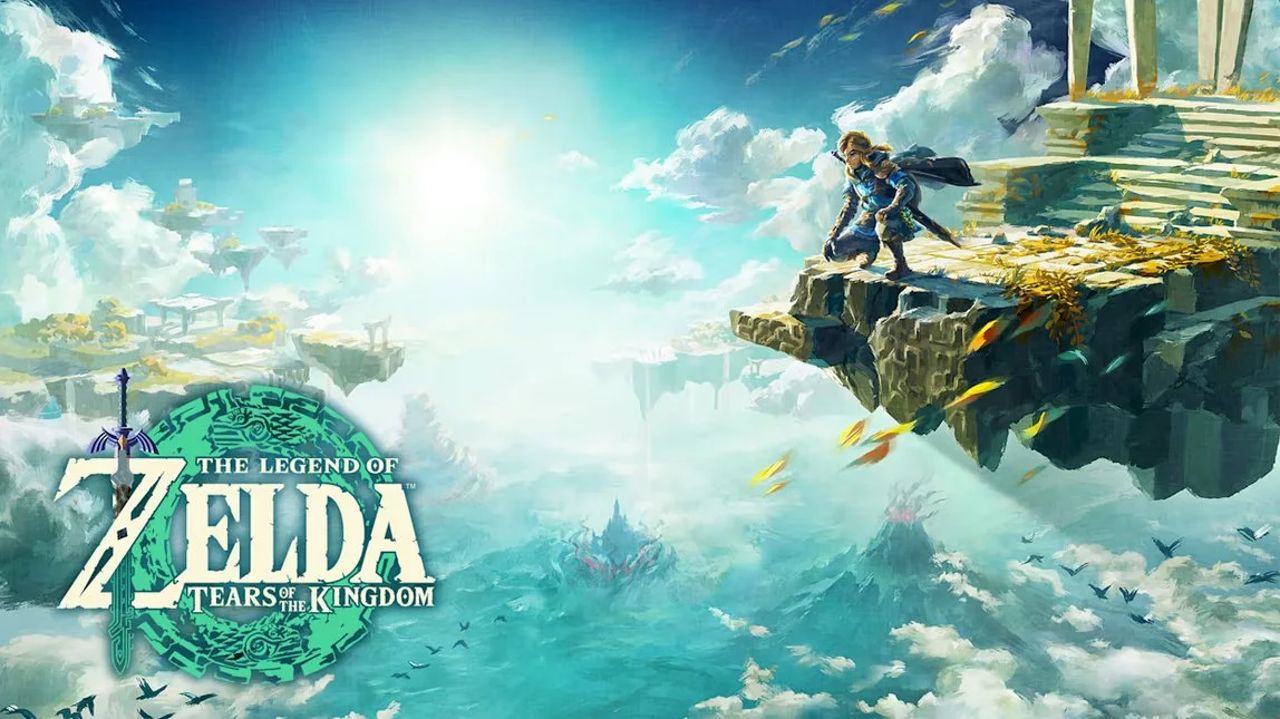How can brands get ahead of the game?
Brands have long sought to crack the code of gaming and reach those spending time in a place where marketing is still scarce. But as much as this community represents an opportunity, it also represents a significant challenge. Stephen Whelan speaks to brand leaders and gamers about relevance, authenticity and the quest to add gaming experiences.
At the time of writing this, Nintendo has just announced that its latest blockbuster release, The Legend of Zelda: Tears of the Kingdom, has sold 10 million copies in the three days since launch.
At around US$60 a pop for the game, you’re looking at the equivalent of a Hollywood movie grossing six hundred million dollars in its opening weekend. Avengers: Endgame, by comparison, which boasts the highest opening box office weekend on record, took ‘just’ US$357m. Think about that for a second.
Add to that Nintendo’s other recent success with The Super Mario Bros Movie, which took just 26 days to smash through $1bn at the global box office, and it’s clear that gaming now possesses the power to reverberate through culture in ways we’ve never seen before.
Video games now generate more money globally than movies and music combined.
For one thing, it’s no longer the preserve of isolated players alone in bedrooms, or small clusters of friends spawning into Quake over LAN connection after hours at school. Fortnite, Minecraft and Roblox are global phenomena that have not only shifted the way gamers interact through competitive socialising, they’ve also kickstarted content creators’ careers.
Video games now generate more money globally than movies and music combined, and some of that money is going directly into the pockets of gamers themselves. It’s now entirely possible to make a living through professional esports, streaming on Twitch, with AdSense revenue on YouTube, paywalled Patreon channels with exclusive content, through brand deals and dropping merch.

Above: Nintendo's latest blockbuster release, The Legend of Zelda: Tears of the Kingdom.
Increasingly, however, it’s big brands that are looking to make their way into this highly guarded space, eyeballing the opportunity to reach an audience who otherwise spend the vast majority of their free time in digital environments that are free from advertising. Seems like a no-brainer, right? The challenge, however, is that the gaming community is, by and large, a highly analytical and deeply media-literate group of consumers, which means any attempt to invade their space is met with intense scrutiny.
The current interaction between brands and the gaming audience is still somewhat limited and, to an extent, based on a very specific view of who a gamer is.
Matthew Patrick, a.k.a MatPat, runs one of the largest gaming channels on YouTube – Game Theorists – which hosts a community of 17.4m subscribers and offers a library of content stretching back to 2010. His videos cover everything from deep cut game lore through to analysis of such pressing topics as “Would Super Mario Win the Olympics” and “What is a Minecraft Emerald Worth”.
As he sees it, the current interaction between brands and the gaming audience is still somewhat limited and, to an extent, based on a very specific view of who a gamer is. “In general, the products that are showing up as ads in and around gaming tend to be very stereotyped based on assumptions about the lifestyles of gamers. You see a lot of cereal ads, junk food promotion and energy drinks. It’s not general products from the likes of the Proctor & Gambles of the world. On top of that, advertising around games is very CPA (cost-per-action) based, so we’re not seeing a lot of awareness or brand love campaigns.”
Above: Monster Energy ad in Death Stranding game.
There are, of course, exceptions to the rule, and some early adopter brands have recognised the need to depart from an interruptive model based on the outdated way brands behave on TV (‘I have enough money to force you to look at something you probably don’t care about while you’re in the middle of watching something you do care about’). MatPat highlights a few early wins.
“Probably my favourite example was when Kellogg’s turned Tony the Tiger into an animated v-tuber [virtual YouTuber] and got him doing a Twitch live stream with endemic creators on the platform. But we’ve also seen examples like Walmart building their version of a VR game, KFC creating a dating simulator, and some of the big fashion houses like Louis Vuitton and Burberry collaborating with titles like Minecraft and League of Legends.”
Everybody agrees [NFTs] contribute nothing to society whatsoever, everybody kinds of hates them and thinks that they’re gross and yet they’re still everywhere
He raises an interesting, and highly problematic, topic when he brings up VR, which sits at the tip of an iceberg that leads below to the metaverse and NFTs. And as fellow YouTube gamer Luke Stephens describes the latter, “it seems to me that NFTs at this point are sort of like the Kardashians. Everybody agrees they contribute nothing to society whatsoever, everybody kinds of hates them and thinks that they’re gross and, yet, they’re still everywhere.” Case in point – the announcement by Montreal-based publisher Ubisoft of a series of limited edition 3D printed Assassin’s Creed figurines with, you guessed it, NFT functionality.

Above: Kellogg’s Tony the Tiger turned into an animated virtual YouTuber.
However, if we’ve learned anything from the way advertising has created a rod for its own back by running headlong into new platforms, it’s that more often than not it’s children who end up targeted in grey areas where legislation is still playing catch up. An example? Just take a look at Google’s $170m fine in 2019 for breaching the Children’s Online Privacy Protection Act. And you only need to look at the money children are sinking into in-game purchases of customised outfits, weapons upgrades and so on, to wonder ‘where is this all heading and why?’
Brands will need to continue to tread very carefully in the game world which gamers feel a lot of ‘ownership’ over. Brands are guests, and I think the best thing to do as guests is to bring something meaningful to the table.
So, if brands are going to start showing up in gaming in ways that are more nuanced than Monster Energy’s hugely jarring product placement in the 2019 action game Death Stranding, what do they need to know first?
“There are roughly three billion gamers in the world today, so I think that puts to rest this image of gamers in the basement with pizza boxes strewn around them,” explains Hamza Khan, Partner for Digital and Growth at McKinsey & Company. “I like the notion of a real ‘value exchange’, and I think brands will need to continue to tread very carefully in the game world which gamers feel a lot of ‘ownership’ over. Brands are guests, and I think the best thing to do as guests is to bring something meaningful to the table. That can take multiple forms – for example: genuinely compelling brand experiences, rewards that cut across virtual and real worlds, and more. In general, brands need to understand the audience’s needs and be able to connect at the right level to address those needs.”

Credits
powered by
Above: Maybelline New York - Through Their Eyes.
A solid example of this would be the recent Maybelline awareness play, Through Their Eyes, which sought to shine a spotlight on the toxic behaviour of misogynistic male gamers towards their female counterparts. The short film used voice altering technology to present male gamers as women in first person shooter games. In digital disguise, these male gamers were then given a first-hand experience of the insults and derogatory comments female gamers are routinely subjected to during online play sessions.
“There’s an increased visibility of what it means to be a gamer and what the lived experience within that space is,” adds MatPat. “YouTube and Twitch have taken what was kind of a private introverted activity and brought it out to the masses for them to see. What the smart brands are starting to recognise is that ‘gamers’ aren’t a singular group. Gaming is an entertainment genre and within that there are different audiences around different games and content platforms. Brands need to be asking ‘who is it we want to reach’ and positioning themselves more strategically around specific IP, big impact community moments such as game launches, and adjusting messaging to meet the interests of those sub-communities.”
Above: Paris Hilton's Valentine’s Day experience in The Sandbox.
Bertrand Levy, VP of Global Licensing and Brand Partnerships at metaverse platform The Sandbox, is leading the charge when it comes to developing innovative ways for brands to reach the growing category of online gamers. “Where traditional media outlets like TV advertising and social media are very rarely able to engage viewers for longer than a couple minutes at the most, this is commonplace in gaming and our partners at The Sandbox have all realised this,” he explains.
What started as simple advertising in games has now grown into brands launching their own gamified experiences.
“Paris Hilton, for example, launched a Valentine’s Day experience in The Sandbox that recorded an average play time per user of 25 minutes. That’s 25 minutes where players are fully immersed in the Paris Hilton IP making memories and growing a relationship with her brand. It’s a remarkable paradigm shift that we’ve only just scratched the surface of. What started as simple advertising in games has now grown into brands launching their own gamified experiences and having a need to hire gaming-related talent to their core team.”
It's barely possible to explore this topic without descending into a cascade of parallel discussions and moral and legal offshoot debates worthy of a sub-reddit or dedicated Discord server. To be honest, it would take an entire DLC’s worth of extra content even to dive into the most superficial place setting exercise. If there’s a single takeout from this, however, it’s that we’ve all seen what happens when advertising and new tech intersect, and so far at least, that’s yet to lead us to a heroic Mario and Princess Peach style resolution.
)




 + membership
+ membership










